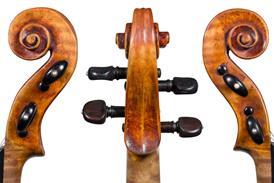- More from navigation items
- Home
- News
- For Subscribers
- Student Hub
- Playing Hub
- Podcast
- Lutherie
- Magazine
- Magazine archive
- Whether you're a player, maker, teacher or enthusiast, you'll find ideas and inspiration from leading artists, teachers and luthiers in our archive which features every issue published since January 2010 - available exclusively to subscribers. View the archive.
- Jobs
- Shop
- Directory
- Contact us
- Subscribe
- Competitions
- Reviews
- Debate
- Artists
- Accessories
Trade Secrets: Making a fingerboard template with aluminium

An easy, effective and useful method to make your own version instead of using ready-made templates
By Atilla Okan
Luthier and lecturer based in İzmir, Turkey
The fingerboard is a very important part of the violin, and any instrument can suffer from various problems without a well-constructed fingerboard. Although there are ready-made fingerboard-making templates available on the market, sold by several different companies, I have observed that working with those templates can be more time-consuming than using one’s own. As the companies prioritise product durability when they are producing their ready-made fingerboard templates, they prefer solid materials that are not very easy to work with. The material I recommend for making a fingerboard template is aluminium, which is easy to process and saves time by leaving marks on the fingerboard…
Already subscribed? Please sign in
Subscribe to continue reading…
We’re delighted that you are enjoying our website. For a limited period, you can try an online subscription to The Strad completely free of charge.
* Issues and supplements are available as both print and digital editions. Online subscribers will only receive access to the digital versions.




























